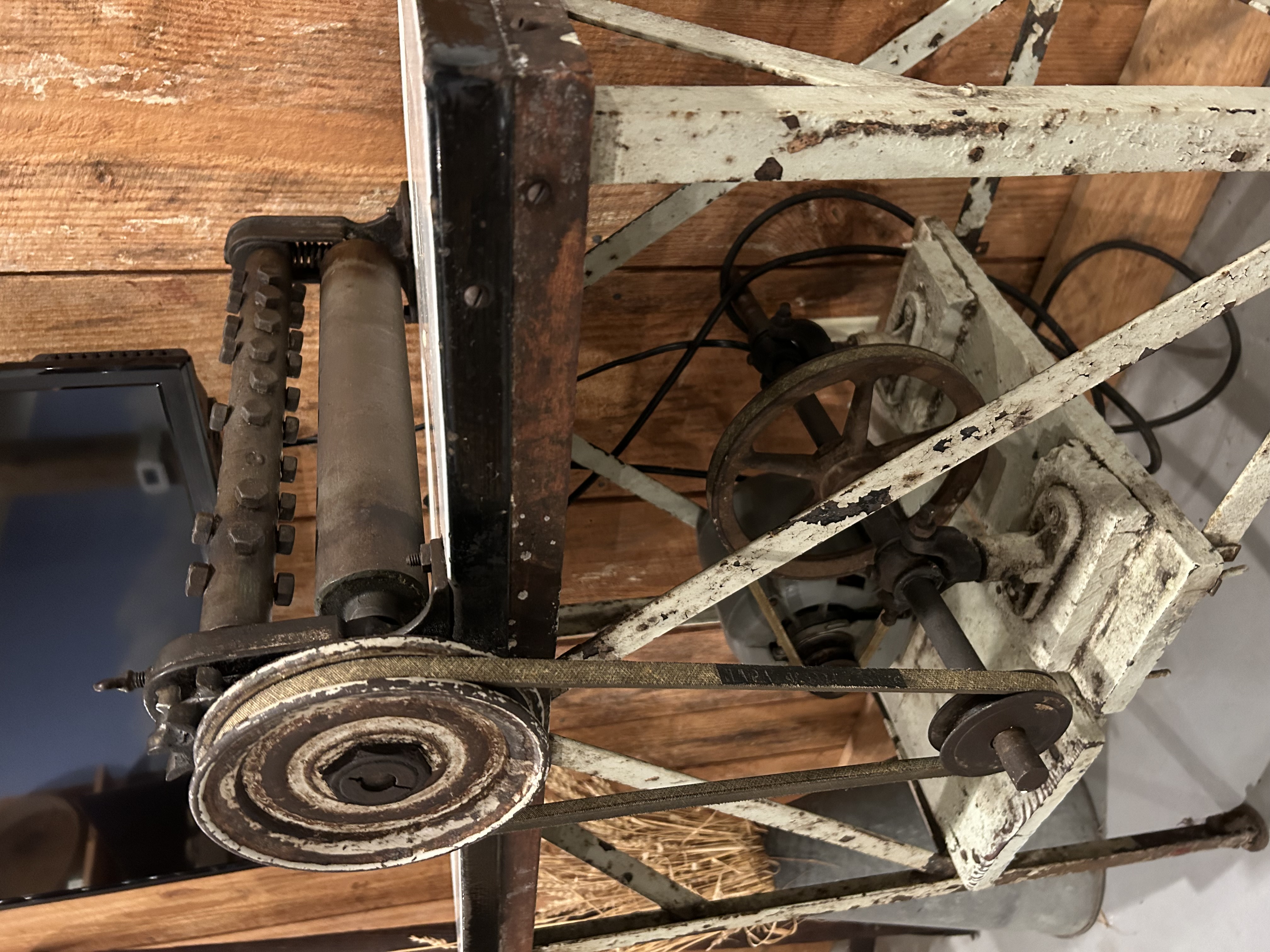Historians Say They’ve Solved the Mystery of a Curious 100-Year-Old Contraption Discovered in Storage

Staffers at the Dorchester County Historical Society in Maryland were baffled by the unusual machine, so they asked the public for help in determining its purpose.
Historians in a small town in Maryland have spent the past few weeks puzzling over an unusual contraption that’s been in storage for years. They even asked the public for help identifying the mysterious machine.
Now, they say they’ve finally cracked the case. The strange artifact is a mechanical “beaten biscuit” maker, used to make a type of dense baked good that was historically popular in the American South.
The saga began late last month, when the Dorchester County Historical Society posted photos of the machine on its Facebook page. In the post, the society asked followers if they had any idea what the device was or what industry it was used for.
The device sits on a ceramic countertop and features two elongated metal cylinders that sit parallel to one another. The bottom cylinder is smooth, like a rolling pin, while the top cylinder is dotted with protruding hexagonal nubs.
The gadget has a relatively modern motor, but all of the other pieces are around 100 years old. It’s been sitting in storage since the 1990s. Records suggest that another historical society in Delaware donated a similar machine, but they do not offer any other insights about the donation.
“In recent years, our society has undergone many changes, and several of our staff passed away,” Zoë Phillips, the historical society’s executive director, tells Smithsonian magazine. “We were left without active members who could tell us more information about what was within our inventory/collection. We began using a new cataloging/accessioning program last year that helps us better manage all our inventory files, and we have been hard at work to solve these sorts of mysteries.”

Meanwhile, online followers shared their own theories about the contraption. Maybe it was used to pull taffy, or to wring excess moisture out of freshly washed clothes? Other users suggested it might have helped soften leather or tenderize meat.
Historians had their own theories, too.
“We potentially think it was a Maryland beaten biscuit maker,” Phillips told WBOC’s Lauren Miller in late October. “[It was] created by a man who was trying to help his aunt with the business, and the belief is that this would’ve helped beat the air out of the dough as the biscuits were being created.”
Beaten biscuits are a type of baked good with roots in the American South. They’re often made with flour, salt, water, sugar and lard. The biscuits have a firm, “crackery texture” and a neutral flavor, as Nashville chef Karl Worley told Garden & Gun magazine’s Jed Portman in 2015.
Traditionally, the biscuits were made by beating the dough on a stump with an ax, per WBOC. Alternatively, they may have been smacked repeatedly with rolling pins or hammers, according to Garden & Gun. Many years ago, the “prolonged and violent” work was often relegated to enslaved cooks.
Since they’re made without a leavening agent, the biscuits don’t rise very much when baked. The dough’s many layers will inflate a bit in the oven—similar to the flaky texture of puff pastry. Bakers typically use a fork to punch small holes in the top of the dough for steam to escape.

Beaten biscuits were often sliced and piled with thin slices of country ham, according to Southern Food: At Home, on the Road, in History by John Egerton. Annie Fisher, an entrepreneurial Black cook living in Columbia, Missouri, at the turn of the 20th century, became a bit of a celebrity for her delicious biscuits.
“People fell in love with her country ham and beaten biscuits,” according to the State Historical Society of Missouri. “She catered events of all sizes. … Former Columbia residents living in New York, Denver and Los Angeles placed orders for her biscuits and fruit cake.”
Officials at the Dorchester County Historical Society wondered if their mystery machine was used to streamline and automate the labor-intensive process. Their theory was supported by the fact that Cambridge—the town where the historical society is located—was once home to a beaten biscuit bakery, per WBOC.
“Maryland has a deep history of making beaten biscuits,” Phillips tells Smithsonian magazine. “There is the Maryland Beaten Biscuit brand, but here in Cambridge, there was also a bakery called the Camper Sisters Bakery that made beaten biscuits as well. Some of their family members still sell them.”
On November 1, the society finally got some information that corroborated their suspicions.
“The man who transported it to our society confirmed it was the same machine he brought here from its previous home in 1992,” says Phillips.





